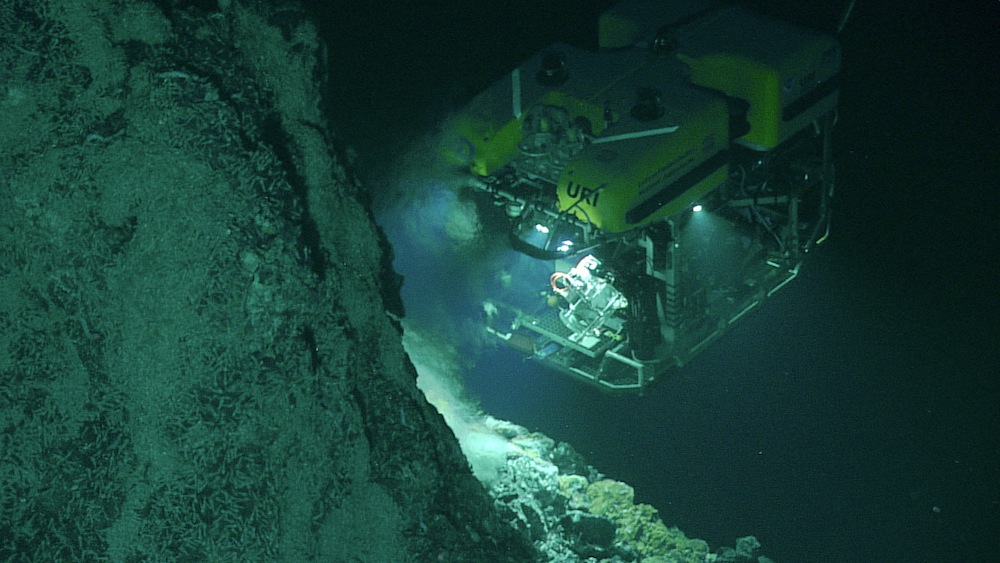Could Gentle Caribbean Unleash a Devastating Tsunami?

The Caribbean usually conjures images of white sandy beaches and sparkling turquoise water, but beneath the sea's tranquil surface, powerful forces are at work.
A massive earthquake in the Caribbean could trigger a deadly tsunami that would hit coastlines from Puerto Rico to New York, some say, though others say the risk has been exaggerated. A group of explorers set sail on a three-month voyage to investigate these threats in the Caribbean's undiscovered depths.
Led by deep-sea explorer Bob Ballard, who discovered the Titanic shipwreck, the voyage is the subject of a new TV special by National Geographic's Nat Geo WILD, called "Caribbean's Deadly Underworld," which premiered Sunday (May 18). [In Images: Exploring the Caribbean Deep]
"The Caribbean Sea is actually made up of a piece of earth under attack from all directions," Ballard told Live Science.
Deep-sea threats
The massive 2004 tsunami in the Indian Ocean that killed close to 230,000 people was triggered by an earthquake along a subduction zone fault, where two of Earth's tectonic plates collide. The earthquake lifted the seafloor, giving the ocean above a giant shove that generated the deadly waves.
A similar fault exists along the Puerto Rico Trench. The Caribbean tectonic plate is sliding beneath the North American plate at the trench, and such a plate boundary can be very dangerous, Ballard said. Underwater landslides and volcanic eruptions can also cause tsunamis, and these hazards are present in the Caribbean.
Sign up for the Live Science daily newsletter now
Get the world’s most fascinating discoveries delivered straight to your inbox.
To study the risks of the underwater fault, Ballard and his colleagues set sail for the Caribbean on a ship called the Nautilus, named after Captain Nemo's submarine in "20,000 Leagues Under the Sea." The team sent two remotely operated vehicles to explore the seafloor, a mysterious realm where sunlight never reaches and which few people have ever seen.
Toward the end of their voyage, Ballard and his team explored an active underwater volcano called Kick-'em Jenny, in the Lesser Antilles, which had collapsed into itself and triggered a gigantic underwater landslide.
Could such a landslide produce a giant wave that reached the United States?
"The potential is there," Ballard said. "More and more people are living near the shore, and Miami is just a few feet above sea level."
Other scientists say the threat is overblown. "While it is probable that large explosions or landslides at Kick 'em Jenny could generate tsunamis, the threat from tsunamis has been largely over-exaggerated," according to The University of the West Indies' Seismic Research Center website. "Not all eruptions at Kick 'em Jenny will generate tsunamis and not all tsunamis will be large," the website said.
Credit: Nat Geo WILD
Deep-sea earthquakes have triggered tsunamis in Puerto Rico in the past. The U.S. Geological Survey says 27 tsunamis in the Caribbean have caused fatalities and extensive damage since the 16th century, though the devastation was limited to the Caribbean.
Whole new world
While exploring the underwater landslide near Kick 'em Jenny, the team encountered a surprise.
"When we went to the base of the landslide, we were completely caught off-guard by a whole new life system triggered by the landslide," Ballard said — from foot-long mussels to species of fish never seen before, as well as familiar ones like the invasive lionfish.
At these depths, most life forms rely on chemicals such as sulfur bubblingfrom the hydrothermal vents, rather than sunlight, which is nonexistent there, for energy. The team found shrimp there with a strange organ on the sides of their heads that detects heat from hydrothermal vents, using it like light from street lamps to navigate.
But even where there were no vents, the explorers found life. It turns out the landslide itself squeezed methane out of the sediment, which supports an entire ecosystem, Ballard said.
Ballard's team will return to the Caribbean this summer to explore more underwater volcanoes and landslides, and viewers at home can watch the dives live on video at nautiluslive.org.
"I've been doing this for 55 years," Ballard said. "Every time we go to sea, we're making discoveries."
Follow Tanya Lewis on Twitter and Google+. Follow us @livescience, Facebook & Google+. Original article on Live Science.

China's '2D' chip could soon be used to make silicon-free chips
Catquistadors: Oldest known domestic cats in the US died off Florida coast in a 1559 Spanish shipwreck
'Vaccine rejection is as old as vaccines themselves': Science historian Thomas Levenson on the history of germ theory and its deniers









